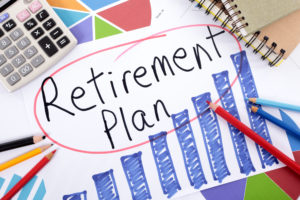I’ve recently updated this post to include more links to related content. I hope you enjoy it.
The term “financial independence” has many meanings to many people.
To some, it means not working at all.
To others, financial independence covers all needs and many wants.
To others still, it means the ability to work on your own terms.
Where do I stand on this subject?
This post will tell you in my six phases to financial independence.
Retirement should not be the goal, financial independence should be
Is retirement your goal?
To stop working altogether?
While I think that’s fine I feel the traditional model of retirement is outdated and quite frankly, not very useful.
As humans, even our lizard brains are smart enough to know we need a sense of purpose to feel fulfilled. Working for decades, saving money for decades, only to come to an abrupt end of any working career might work for some people but it’s not something I aspire to do.
With people living longer, and more diverse needs of our society expanding, the opportunities to contribute and give back are growing as well. To that end, I never really aspire to fully “retire” – cease to work.
Benefits of financial independence (FI)
In the coming years, I hope to realize my desired level of financial independence.
We believe the realization of FI will bring about some key benefits:
- The opportunity to regain more control of our most valuable commodity: time.
- Enhanced opportunities to learn and grow.
- Spend extra money on things that add value to your life, like experiences or entrepreneurship.
Whether it’s establishing a three-day work week, spending more time as a painter, snowboarder, or photographer, or whatever you desire – financial independence delivers a dose of freedom that’s hard to come by otherwise.
More succinctly: financial independence funds time for passions.
FI concepts explained elsewhere
There are many takes on what FI means to others.
There is no right or wrong folks – only models and various assumptions at play.
For kicks, here are some select examples I found from authors and bloggers I follow.
- JL Collins, author of The Simple Path to Wealth, popularized the concept of “F-you money”. This is not necessarily financially independent large sums of money but rather, enough money to buy a modest level of time and freedom for something else. I suspect that money threshold varies for everyone.
- Various bloggers subscribe to a “4% rule”* whereby you might be able to live off your investments for ~ 30 years, increasing your portfolio withdraws with the rate of inflation.
Recall the rule:
*Based on research conducted by certified financial planner William Bengen who looked at various stock market returns and investment scenarios over many decades. The “rule” states that if you begin by withdrawing 4% of your nest egg’s value during your first year of retirement, assuming a 50/50 equity/bond asset mix, and then adjust subsequent withdrawals for inflation, you’ll avoid running out of money for 30 years. Bengen’s math noted you can always withdraw more than 4% of your portfolio in your retirement years however doing so dramatically increases your chances of exhausting your capital sooner than later.
In some ways, the 4% rule remains a decent rule of thumb.
Are there levels of FI?
For some bloggers, the answer is “yes”:
- Half FI – saved up 50% of your end goal (e.g., $500,000 of $1M).
- Lean FI – saved up >50% of your end goal; income that pays for life’s essentials like food, shelter and clothing (but nothing else is covered).
- Flex FI – saved up closer to 80% of your end goal (e.g., $800,000 of $1M). This provides financial flexibility to cover most retirement spending including some discretionary expenses.
- Financial Independence (FI) – saved up 100% of your end goal, you have ~ 25 times your annual expenses saved up whereby you could withdraw 4% (or more in good markets) for 30+ years (i.e., the 4% rule).
- Fat FI – saved up at or > 120% of your end goal (in this case $1.2M for this example), such that your annual withdrawal rate could be closer to 3% (vs. 4%) therefore making your retirement spending plan almost bulletproof.
There is this concept about “Slow FI” that I like from The Fioneers. The concept of “Slow FI” arose because, using the Fioneers’ wording while “there were many positive things that could come with a decision to pursue FIRE, but I still felt that some aspects of it were at odds with my desire to live my best life now (YOLO).”
They went on to state, because “our physical health is not guaranteed, and we could irreparably damage our mental health if we don’t attend to it.”
Well said.
My six phases of financial independence
With a similar line of thinking related to Slow FI, since we all have only one life to live, we should try and embrace happiness in everything we do today and not wait until “retirement” to find it.
After reviewing these ideas above, among others, I thought it would be good to share what I believe are the six key phases of any FI journey – including my own.
Phase 1 – FI awakening. This is where there is an awareness or at least an initial desire to achieve FI even if you don’t know exactly how or when you might get there.
FI awakening might consider self-reflection questions or thoughts like the following:
- I would love to retire early or retire eventually…
- I can never seem to get off this credit card treadmill…
- I wish I had some extra money to travel…
- Wouldn’t it be nice to buy X guilt-free?
(I had my awakening just before I decided to become My Own Advisor, triggered by the financial crisis of 2008-2009.)
Phase 2 – FI understanding. This is the phase where people are getting themselves organized; they start to diligently educate themselves on what their personal FI journey might be.
In this phase, they might set goals or get a better handle on what goes into their financial plan. Even if your plan is not perfect, it’s a start.
They might start asking some deeper questions like:
- Why is money important to me?
- What is my money for?
- How do I know I’m doing it right?
I would say it took me until my mid-30s to get my financial life in order through more financial education and improved financial literacy. It was a process that took a couple of years although I’m always continuously learning and improving. I don’t pretend to know it all.) Continue Reading…









